Abstract
Rogosa, M., (National Institutes of Health, Bethesda, Md.), M. I. Krichevsky, and F. S. Bishop. Truncated glycolytic system in Veillonella. J. Bacteriol. 90:164–171. 1965.—Intact Veillonella cells do not utilize carbohydrates for growth, nor are carbohydrates fermented. In cell extracts, there is no detectable glucokinase or fructokinase. Cell extracts do not degrade glucose or fructose unless supplemented with yeast hexokinase. Under these conditions, triose phosphates are formed in the presence of a hydrazine trap. When glucose-C14 plus added hexokinase or fructose-1,6-diphosphate-C14 was incubated with cell extracts, the production of CO2, acetate, pyruvate, propionate, and lactate was detected. It is concluded that, except for a hexokinase, all the activities required for a glycolytic system are present.
Full text
PDF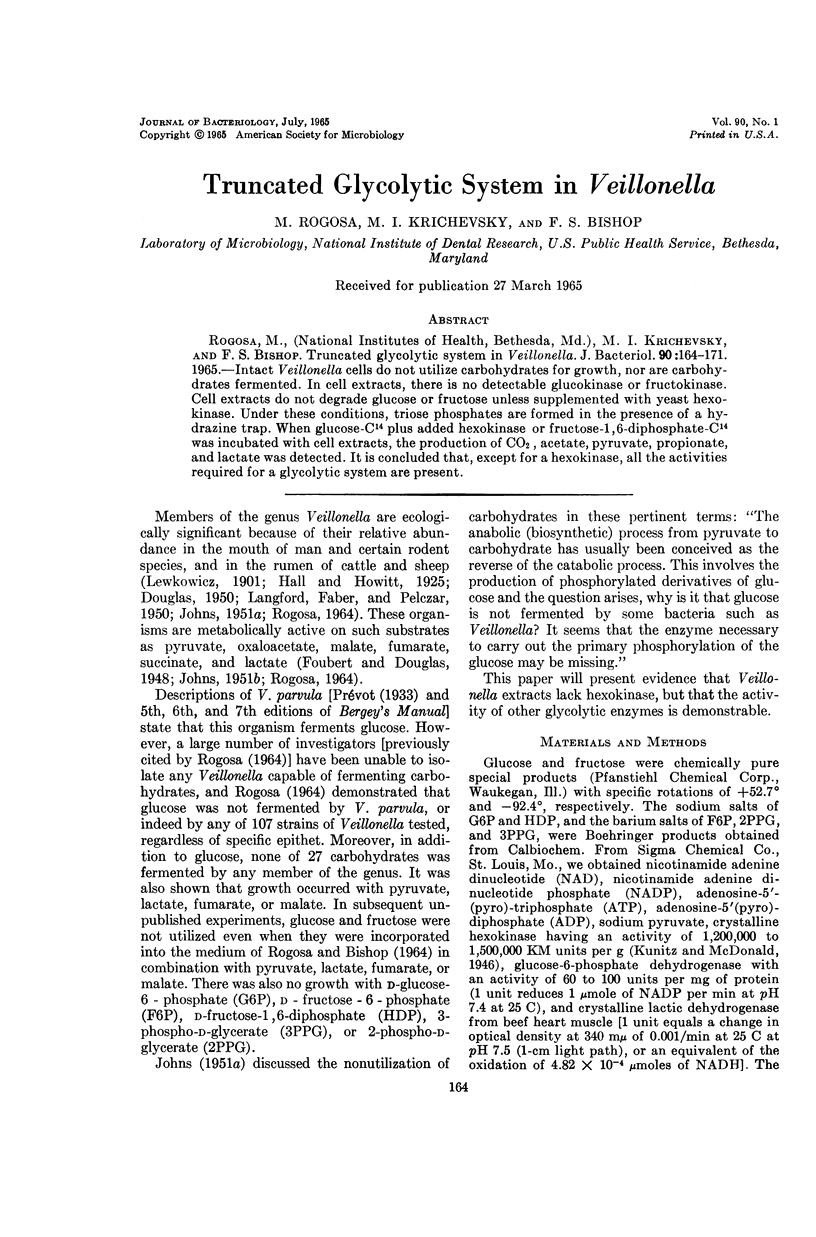

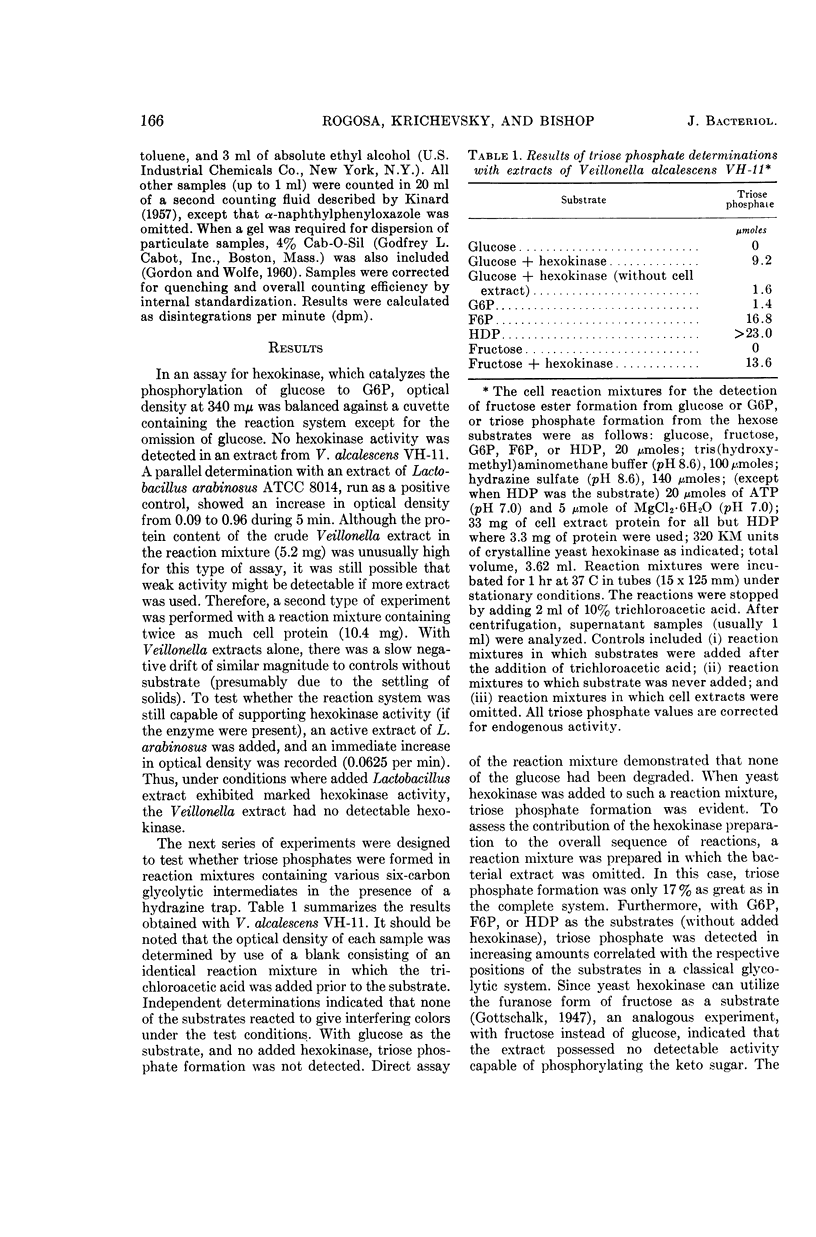
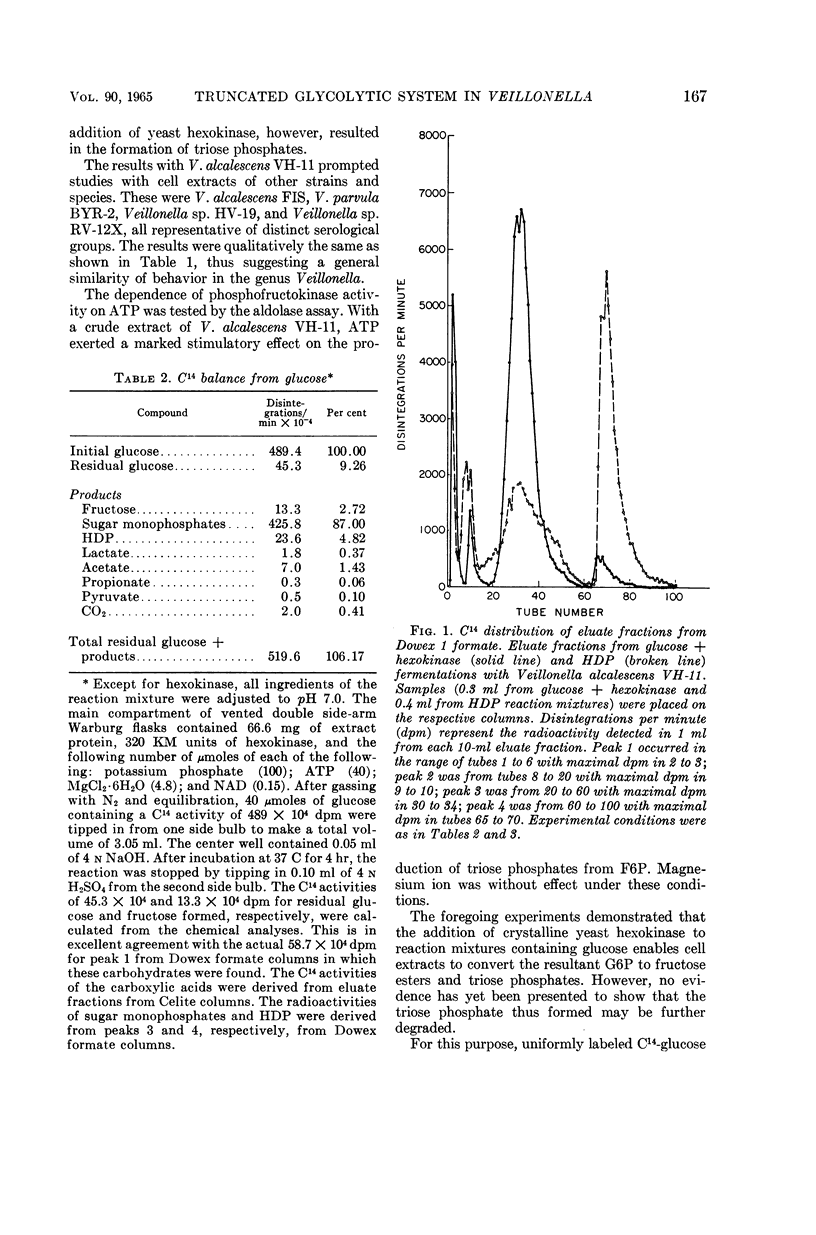
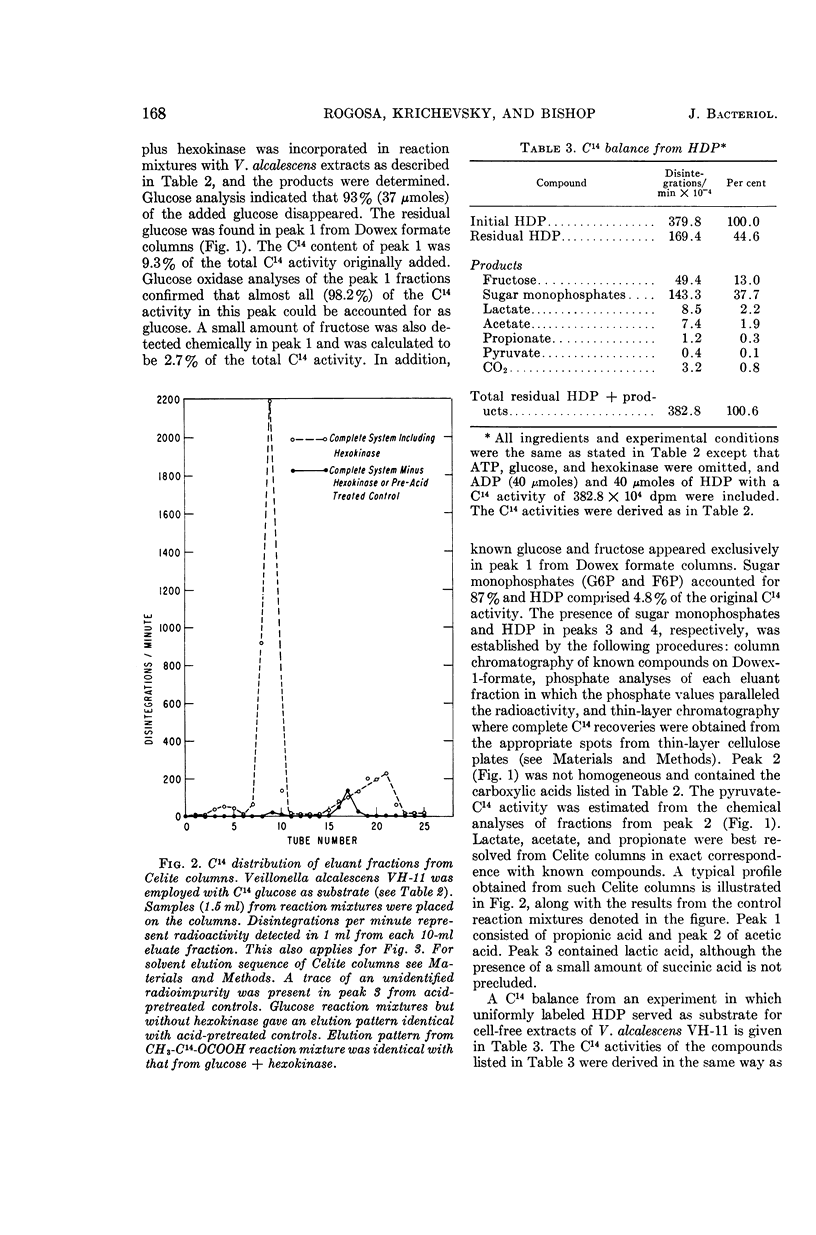
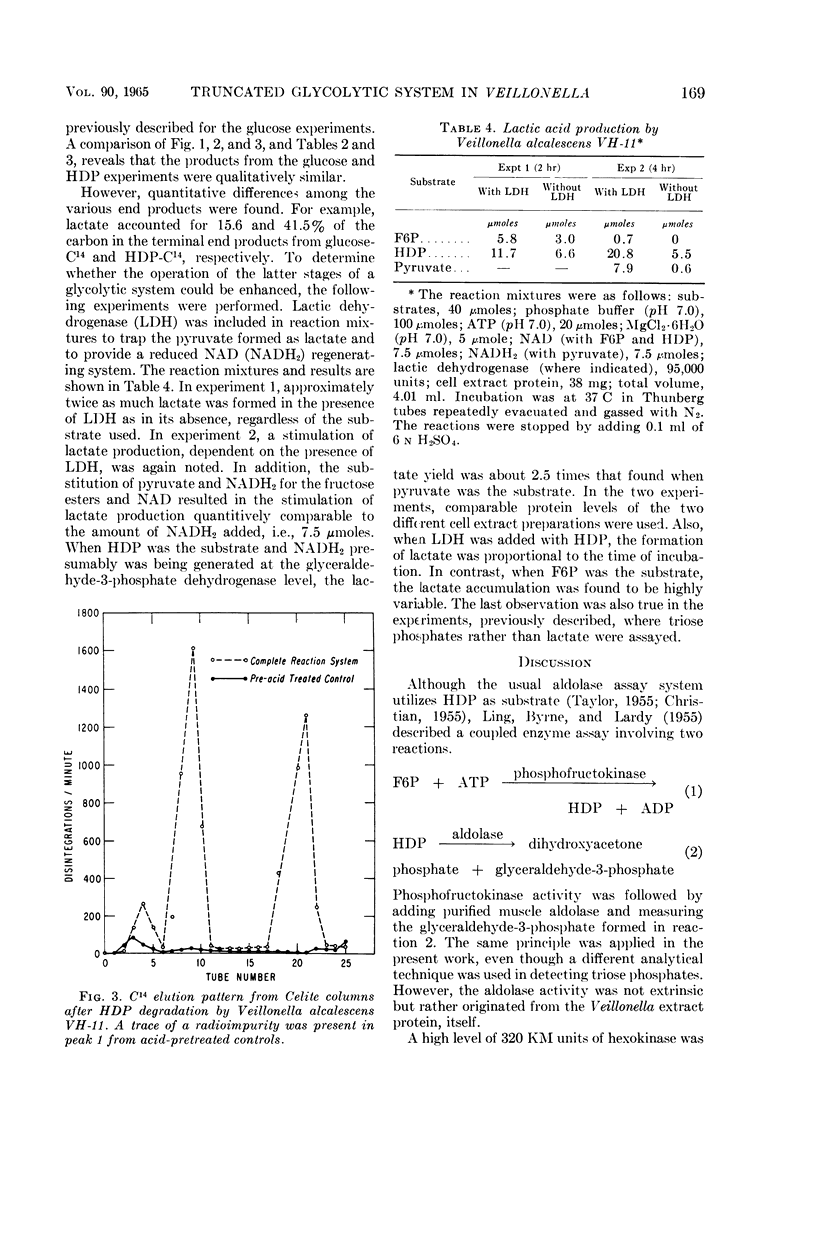
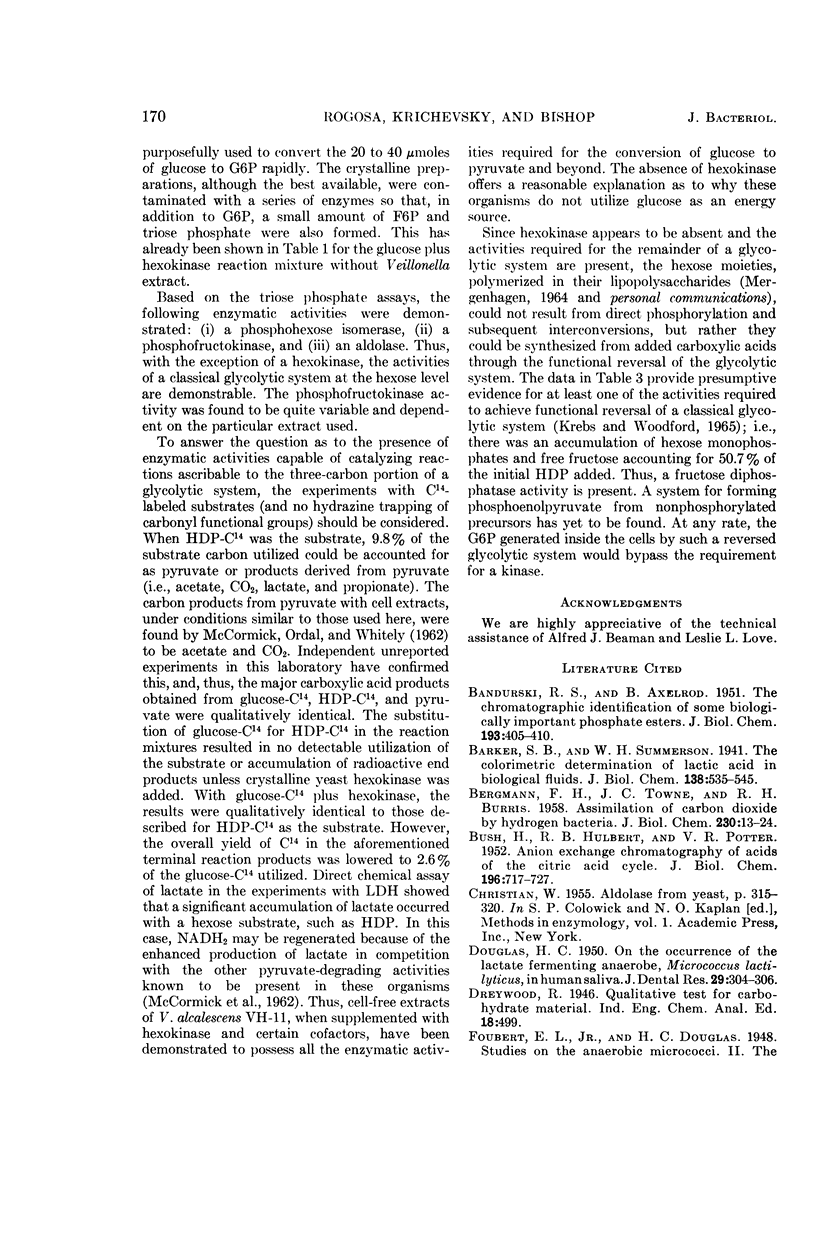
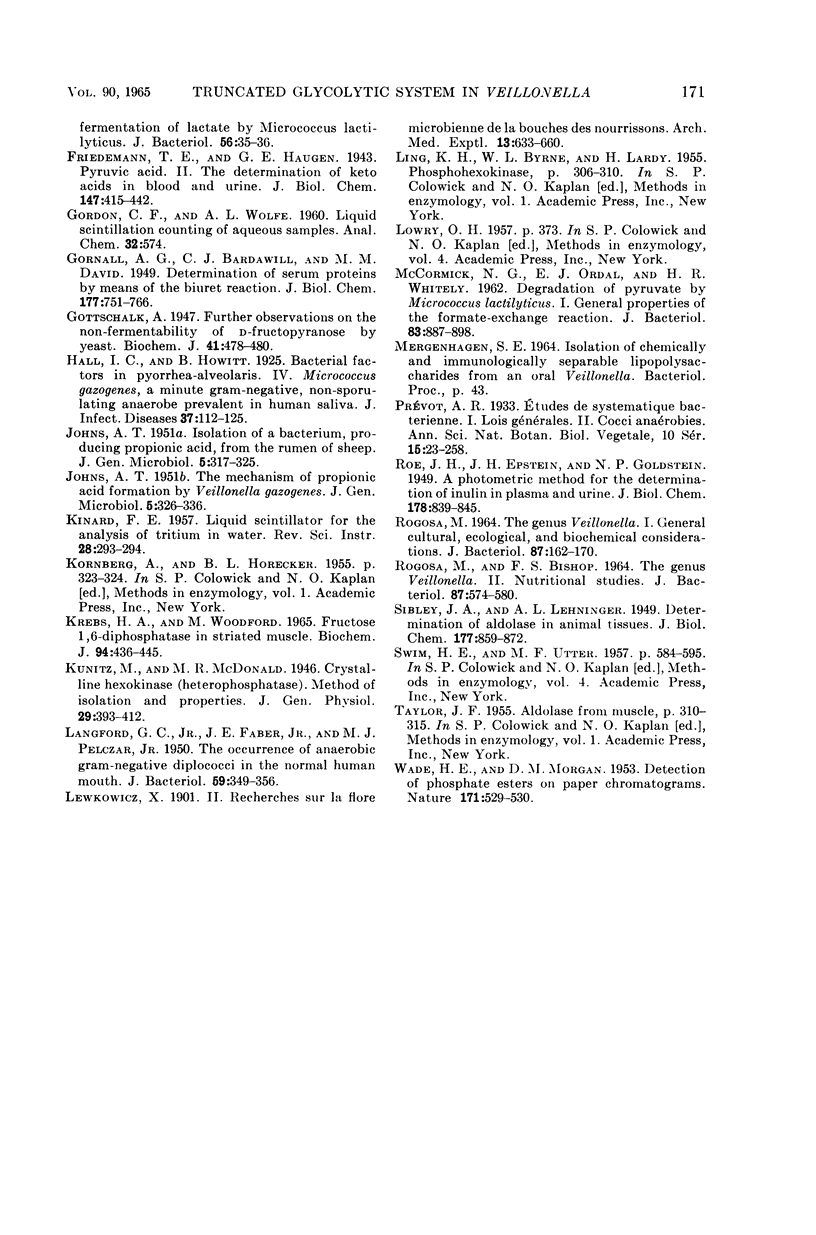
Selected References
These references are in PubMed. This may not be the complete list of references from this article.
- BANDURSKI R. S., AXELROD B. The chromatographic identification of some biologically important phosphate esters. J Biol Chem. 1951 Nov;193(1):405–410. [PubMed] [Google Scholar]
- BERGMANN F. H., TOWNE J. C., BURRIS R. H. Assimilation of carbon dioxide by hydrogen bacteria. J Biol Chem. 1958 Jan;230(1):13–24. [PubMed] [Google Scholar]
- BUSCH H., HURLBERT R. B., POTTER V. R. Anion exchange chromatography of acids of the citric acid cycle. J Biol Chem. 1952 May;196(2):717–727. [PubMed] [Google Scholar]
- DOUGLAS H. C. On the occurrence of the lactate fermenting anaerobe, Micrococcus lactilyticus, in human saliva. J Dent Res. 1950 Jun;29(3):304–306. doi: 10.1177/00220345500290030801. [DOI] [PubMed] [Google Scholar]
- Foubert E. L., Douglas H. C. Studies on the Anaerobic Micrococci: II. The Fermentation of Lactate by Micrococcus lactilyticus. J Bacteriol. 1948 Jul;56(1):35–36. [PMC free article] [PubMed] [Google Scholar]
- Gottschalk A. Further observations on the non-fermentability of d-fructopyranose by yeast. Biochem J. 1947;41(3):478–480. doi: 10.1042/bj0410478. [DOI] [PMC free article] [PubMed] [Google Scholar]
- JOHNS A. T. Isolation of a bacterium, producing propionic acid, from the rumen of sheep. J Gen Microbiol. 1951 May;5(2):317–325. doi: 10.1099/00221287-5-2-317. [DOI] [PubMed] [Google Scholar]
- JOHNS A. T. The mechanism of propionic acid formation by Veillonella gazogenes. J Gen Microbiol. 1951 May;5(2):326–336. doi: 10.1099/00221287-5-2-326. [DOI] [PubMed] [Google Scholar]
- KREBS H. A., WOODFORD M. FRUCTOSE 1, 6-DIPHOSPHATASE IN STRIATED MUSCLE. Biochem J. 1965 Feb;94:436–445. doi: 10.1042/bj0940436. [DOI] [PMC free article] [PubMed] [Google Scholar]
- LANGFORD G. C., Jr, FABER J. E., Jr, PELCZAR M. J., Jr The occurrence of anaerobic gram-negative diplococci in the normal human mouth. J Bacteriol. 1950 Mar;59(3):349–356. doi: 10.1128/jb.59.3.349-356.1950. [DOI] [PMC free article] [PubMed] [Google Scholar]
- McCormick N. G., Ordal E. J., Whiteley H. R. DEGRADATION OF PYRUVATE BY MICROCOCCUS LACTILYTICUS I. : General Properties of the Formate-Exchange Reaction. J Bacteriol. 1962 Apr;83(4):887–898. doi: 10.1128/jb.83.4.887-898.1962. [DOI] [PMC free article] [PubMed] [Google Scholar]
- ROGOSA M., BISHOP F. S. THE GENUS VEILLONELLA . II. NUTRITIONAL STUDIES. J Bacteriol. 1964 Mar;87:574–580. doi: 10.1128/jb.87.3.574-580.1964. [DOI] [PMC free article] [PubMed] [Google Scholar]
- ROGOSA M. THE GENUS VEILLONELLA. I. GENERAL CULTURAL, ECOLOGICAL, AND BIOCHEMICAL CONSIDERATIONS. J Bacteriol. 1964 Jan;87:162–170. doi: 10.1128/jb.87.1.162-170.1964. [DOI] [PMC free article] [PubMed] [Google Scholar]
- WADE H. E., MORGAN D. M. Detection of phosphate esters on paper chromatograms. Nature. 1953 Mar 21;171(4351):529–530. doi: 10.1038/171529a0. [DOI] [PubMed] [Google Scholar]


